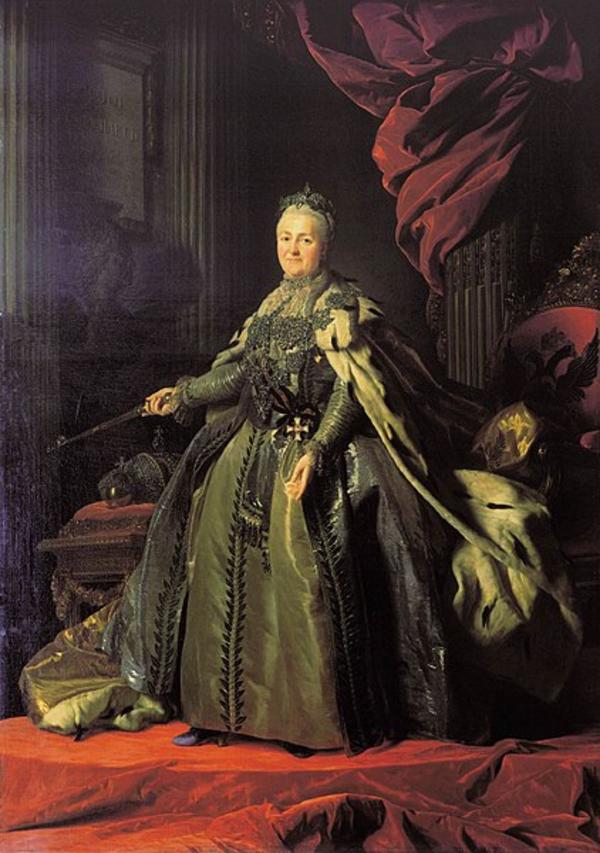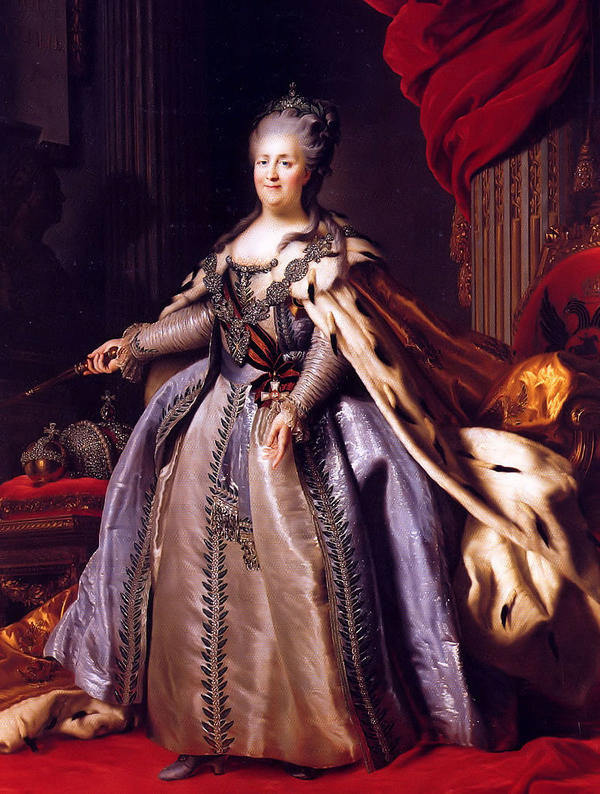The grand portrait of Empress Catherine II was made by unknown painter after the original by Alexander Roslin. This painting has a remarkable history. Alexander Roslin had Swedish origin and spent most of his life in Paris. In the middle of the 1770s he visited Saint Petersburg where, in the light of his popularity, he was commissioned to do a lot of works with the members of the royal family among the clients. One of them was an order to paint the portrait of Catherine II. The artist placed high demands on similarity in portrait genre, which wasn’t common in case with the grand portraits of high society. In his portraits one can find a wider range of facial types than it is common for the 18th century art. Roslin was also realistic in terms of depicting the clothes and attributes. The Empress liked the painting’s composition, but she didn’t like the portrait itself. It is important to note that the grand portrait of the Classicist epoch set a mission to feature an ideal enlightened monarch, embodying all the epoch’s virtues. Roslin stepped away from this principle and created a powerful yet more intimate czarina’s portrait.
The Russian artist Fyodor Rokotov was obliged to make a copy of the portrait with newly painted face of the Empress. Catherine the Great was happy with the result and ordered to set this painting as an example for her future portraits. Thereafter this image was copied many times. Such portrait perfectly met the 18th century ideas of the grand portrait which underlines czarina’s power, royalty and brightness.
Tver Gallery has a smaller version of a portrait sent to the palace in the second half of the 1770s. Now it decorates the gallery’s great hall. It is considered that it was painted in Dmirty Levitzky’s workshop for Tver vicegerency established according to Catherine’s order in 1775. At the featured life-size portrait the Empress is shown with the permanent attributes of power, the scepter and the ball, wearing a mantle made of ermine fur. According to the genre’s rules, Catherine II wears all the orders that belonged to her by the right of succession. Her dress is made of the luxury fabric only. Catherine’s image itself is full of wisdom, certitude and the feeling of the Empire’s greatness, which is led by her.
The Russian artist Fyodor Rokotov was obliged to make a copy of the portrait with newly painted face of the Empress. Catherine the Great was happy with the result and ordered to set this painting as an example for her future portraits. Thereafter this image was copied many times. Such portrait perfectly met the 18th century ideas of the grand portrait which underlines czarina’s power, royalty and brightness.
Tver Gallery has a smaller version of a portrait sent to the palace in the second half of the 1770s. Now it decorates the gallery’s great hall. It is considered that it was painted in Dmirty Levitzky’s workshop for Tver vicegerency established according to Catherine’s order in 1775. At the featured life-size portrait the Empress is shown with the permanent attributes of power, the scepter and the ball, wearing a mantle made of ermine fur. According to the genre’s rules, Catherine II wears all the orders that belonged to her by the right of succession. Her dress is made of the luxury fabric only. Catherine’s image itself is full of wisdom, certitude and the feeling of the Empire’s greatness, which is led by her.



